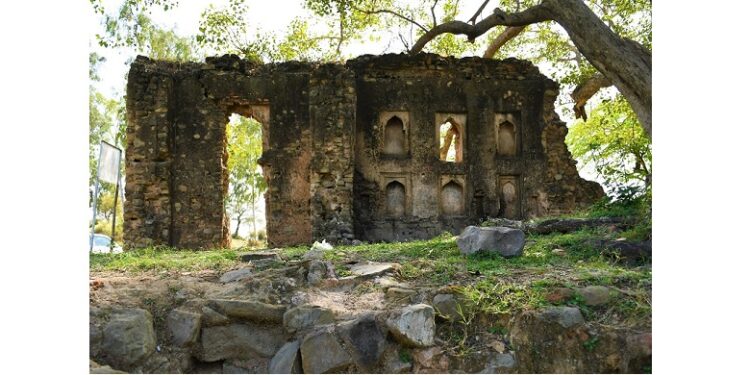
Serving in the reigns of Mughal emperors Akbar and Jahangir, Sultan Jalal Khan was known for his public welfare works
Zulfiqar Ali Kalhoro
Located about 18 km northeast of Sohawa town in Jhelum district is the historical site of Sar Jalal Khan where one can see an old mosque, tank, the remains of Sarai or Farodgah, and a shrine. The historical Sar Jalal Khan is located on the old Grand Trunk Road, 15 km from modern G.T Road. Barring the shrine of Shah Jahan Muhammad Chishti, all other monuments were constructed during the Mughal period (1526-1857).
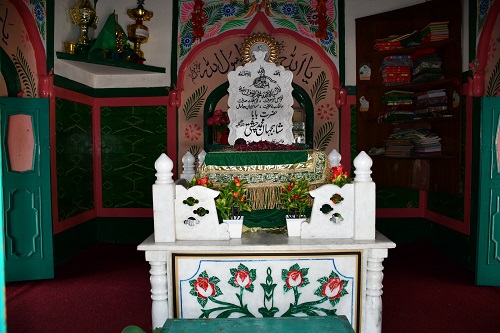
Sultan Jalal Khan Gakhar served the Mughal Emperor Akbar (d. 1605) and his son Jahangir (d. 1627). Tuzuk-e-Jahangiri states that Jalal Khan was known for his great benevolence. During a famine in his country, he saved thousands from perishing by distributing food and money. According to Kai Goharnamah by Raizada Diwan Dhuni Chand, Sultan Jalal Khan died in 1028 AH/1618 AD in a military expedition against the Afghans in the trans-Indus region, which was undertaken by the command of the emperor Jahangir.
Sultan Jalal Khan was also known for his public welfare works. He constructed Pakka tank near Karounta. That place later came to be known after his name Sar Jalal Khan. It was one of the largest tanks in the Pothohar region. Apart from Sar Jalal Khan, there are a few other tanks in the Jhelum district which were constructed later. Tarikh-e-Pabbi Vol.1, a manuscript authored by Kifayat Ali Khan Panwar in 1938, mentions five tanks (talabs) Sar Jalal Khan, Talab Dhongi, Mai Ka Talab/Sar at Parri Darweza, Talab Bishandaur and Talab Sohawa. I have visited three tanks Sar Jalal Khan, Parri Darweza, and Bishandaur. All three tanks are constructed of masonry.
The tank of Bishandaur as per an inscription on a wall of the tank was constructed by Bakshi Dala Mal whereas one in Parri Darweza is locally called Mai Ka Talab or Sar. During my two visits to Parri Darweza in 2021 and 2022 respectively, I came to know through interviews with local people that it was constructed by Shakuntala Devi who was the wife of Jai Singh. She also built a boali (stepped well) in the village.
There are also the remains of a structure which is probably a bivouac (Farodgah). Only the wall of the structure is extant now. It was probably in this building where once Princess Jahan Ara Begum – the eldest daughter of Shah Jahan (d.1666) – stayed.
I have also visited historical Hayat Sar (formerly Ayaz Sar) in Jairo Ratial village in Gujar Khan tehsil. It is also an ancient tank in Pothohar that predate the Sar Jalal Khan and was probably constructed during the Ghaznavid period.
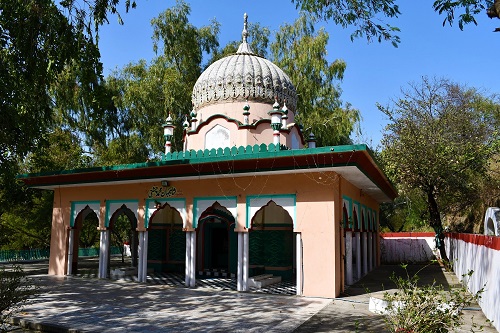
Zaman Khokhar (2004) writes in Gujar Khan- Kahuta Ruhaniyat wa Tarikh ke Ainey Men that Sar Jalal Khan was built between 1587 and 1588. Kifayat Ali Khan (1938) believes that there was an inscription that was buried by silt or sediment now. According to him, there was a total of 140 steps in a pond. The majority of the steps of the tank are now buried under sludge. To maintain the water level in the tank, a water tunnel on the southward was also constructed to drain out water when it is overfilled.
There are also the remains of a structure which is probably a bivouac (Farodgah). Only the wall of the structure is extant now. It was probably in this building where once Princess Jahan Ara Begum – the eldest daughter of Shah Jahan (d.1666) – stayed. Jahan Ara Begum (d. 1681) writes in her autobiography Risla-i-Sahibiyah (1640-1) that she stayed at Tal (tank) Jalal en route to Kabul. During her stay at Tal or Sar Jalal, she wished to meet Haji Abdullah Shah alias Diwan Huzoori (d.1662) of Bishandaur and sent presents to him which he accepted.
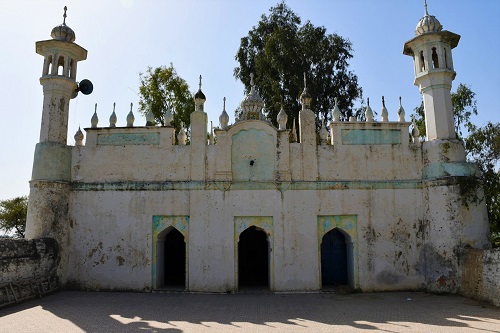
Apart from the remains of the tank and Farodgah or Sarai, there are a mosque, an old graveyard, and the shrine of Shah Jahan Muhammad Chishti. The mosque was first built by Sultan Jalal Khan Gakhar. Later it was renovated and expanded by Rani Mungo, which is now locally known as the mosque of Rani Mungo. Rani Mungo became the ruler after the death of her husband Sultan Murad Quli Khan in 1087 AH/1674 AD. She wore royal robes during the reign of Aurangzeb (d.1707) and became the first woman in the Gakhar dynasty to rule in Pothohar. She was from the Janjua tribe. Rani Mungo like other royal Gakhar women was known for her public welfare works and building activity. During her reign, she built a few buildings which were mainly located in her capital Dangali.
She was also credited to have renovated and expanded a mosque at Sar Jalal Khan. The mosque has lost its originality due to frequent renovations. However, the western wall has retained some originality. It is rectangular in plan with three arched entrances leading to the main prayer hall of the mosque. During a renovation about three decades ago, the wooden ceiling of the mosque was removed. The distinctive feature of the mosque is round corner buttresses, an architectural feature that can also be seen in structures that were built by Gakhar rulers during the reigns of Mughal emperors Jahangir, Shah Jahan, and Aurangzeb. The majority of the mosques and tombs built by Gakhar rulers used round buttresses in buildings. The best specimen can be seen in a mosque at Dangali which was also built by Rani Mungo. A tomb of Gakhar nobles, albeit in shambles, at Bhatta village in Gujar Khan tehsil has also round buttresses almost similar to be seen in the mosque of Rani Mungo at Sar Jalal Khan. Rani Mungo also built a mosque, and Eidgah in Dangali which I will discuss in another article in detail. Dangali was first founded by Rajar Khan Gakhar in the 12th century.
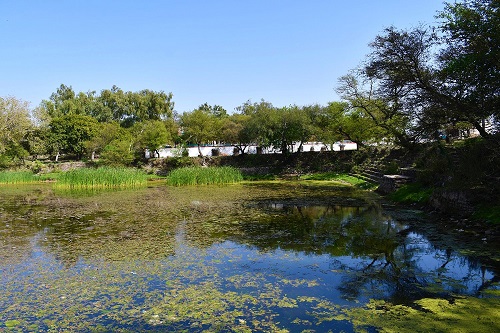
Sar Jalal Khan also known as Rani Mungo mosque is probably the third oldest surviving mosque of the Gakhars. The earliest mosque of the Gakhars is located at Bagh Jogian near Pharwala, which was built by Mai Qamro, the wife of Hathi Khan Gakhar, in the first quarter of the 16th century. The second oldest surviving mosque of the Gakhars was built by Sultan Sarang Khan Gakhar at Rawat. The fourth oldest mosque of the Gakhar tribe is located at Dangali, which was first built by Rani Mungo and later was renovated and expanded by Dilwar Khan Gakhar and other Gakhar nobles.
Apart from the mosque, there is also located the shrine of Shah Jahan Muhammad Chishti, about whom not much is known. It is also not known as to whose deputy or disciple he was. However, Muhammad Sharif Mirza (2003) discusses a brief hagiography of the saint in Gulistan-e-Urfa Vol. 1, a book that deals with the saints and shrines of Sohawa tehsil. Muhammad Sharif Mirza believes that Shah Jahan Muhammad Chishti was a deputy of Muin al-Din Chishti (d.1236), a claim which doesn’t have any historical evidence to substantiate it. According to local accounts, Shah Jahan Muhammad Chishti came from neighboring village of Malal to Sar Jalal Khan when it was a prosperous settlement during the reign of the Mughal emperor Akbar. It is the most popular shrine in the area which is visited by the local community on a number of occasions to seek the blessings of the saint.
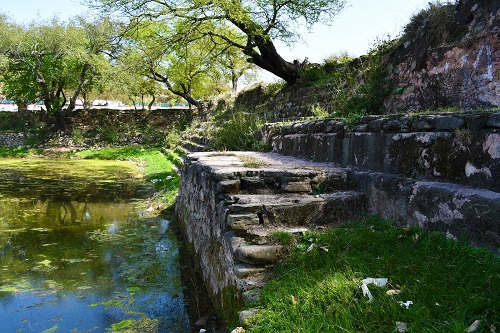
There is also an old graveyard at Sar Jalal Khan where dignitaries of Gakhar and other tribes are buried. From the expanse of the Sar Jalal Khan site, It seems to have been an important Sarai and settlement on the old G.T Road. According to the local community, the old G.T road was passed by Sar Jalal Khan and went to Pakka Sarai in Gujar Khan and Kallar Syedan finally reaching Rawat. Dr. Saifur Rahman Dar (1994) also discusses this route in the article” “Caravanserais along the Grand Trunk Road in Pakistan: A Central Asian Legacy,” which is published in the Journal of Central Asia (now the Journal of Asian Civilizations). He states that from Sar Jalal Khan, an ancient road used to go to Rohtas on the one hand and another to Rawat passing by Dhamaik, Hathia, Mahsa, and Pakka Sarai, Kallar Syedan. The latter reaches Rawat where the modern G.T. Road meets the ancient G.T. Road.
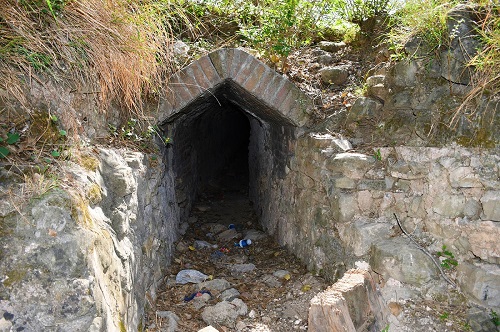
I have visited several monuments along this ancient route. If one travels through this old route from Sar Jalal Khan to Rawat, one can see the remains of baolis and other monuments, which were mainly built by the Gakhar nobles, who largely served the Mughals. The monuments built by Gakhars in different areas of Pothohar now lie in shambles. Like other crumbling Gakhar monuments, the monuments at Sar Jalal Khan are also in a bad state of preservation. They need to be preserved before they become history!
____________________
Dr. Zulfiqar Ali Kalhoro, an anthropologist, has authored 12 books: ‘Symbols in Stone: The Rock Art of Sindh’, ‘Perspectives on the art and architecture of Sindh’, ‘Memorial Stones: Tharparkar’ and ‘Archaeology, Religion and Art in Sindh’. He may be contacted at: zulfi04@hotmail.com
Courtesy: The Friday Times Naya Daur Lahore (Published on October 26, 2022)